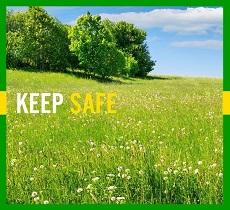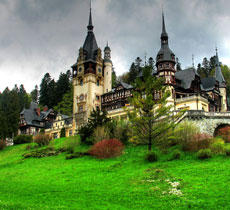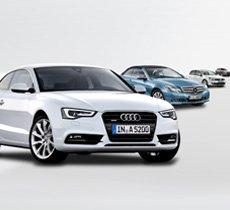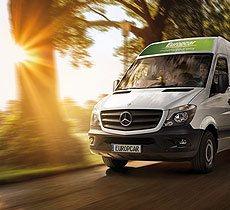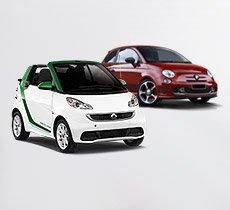- Services
-
Deals
Local dealsWorldwide dealsPartner deals
- Fleet
-
Worldwide Locations
Top CitiesTop Stations
Bucharest
BUCHAREST – A TOWN OF AVENUES AND PARKS
Romania's capital, the nation's centre of cultural and economic life, was founded more than 500 years ago and is a natural starting point for visits to the country. During the 1930's its tree-lined boulevards and "fin de siecle" architecture gave it the nickname "Little Paris".
There is even an Arc de Triomphe on the impressive Soseaua Kisseleff which is longer than the Champs Elysees and has ranges of trees which flower beautifully in the spring.
Despite the massive reconstruction of the 1980s, Bucharest remains a Garden City, leafy and pleasant, with cafes open on sidewalks in the summer, and with boats on its lakes and rivers.
Exploring the City
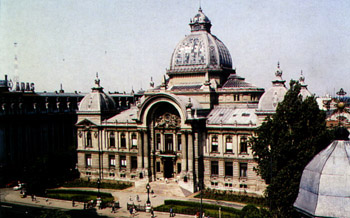 Finding your way is easy in Bucharest. The underground network offers a standard fare and covers most of the city. Major boulevards run North-South from the Arcul de Triumf (Triumphal Arch) down to the Centrul Civic (Civic Center), crossed by others going East-West. Calea Victoriei - a continuation of Soseaua Kisseleff - is the place where the city's inhabitants prefer taking strolls on summer evenings.
Finding your way is easy in Bucharest. The underground network offers a standard fare and covers most of the city. Major boulevards run North-South from the Arcul de Triumf (Triumphal Arch) down to the Centrul Civic (Civic Center), crossed by others going East-West. Calea Victoriei - a continuation of Soseaua Kisseleff - is the place where the city's inhabitants prefer taking strolls on summer evenings.
Here you will find majestic public buildings like the National History Museum and the main Post Office, whereas close to its Southern end there is the lovely Parcul Cismigiu (Cismigiu Park). Bulevardul (Boulevard) Magheru is parallel to Calea Victoriei and it hosts tourist and airline offices, cinemas and hotels.
An Eclectic Mixture of Styles
You will be intrigued by the city's eclectic mixture of architecture, from Curtea Veche, the remains of Prince Vlad Tepes 15th century palace - he was the city's founder as well as the inspiration for "Dracula", - to Orthodox Churches, Second Empire mansions, the stolid Stalinist architecture of the communist years and the colossal 6,000 room Parliament House, the second largest building in the world after the Pentagon.
What to See
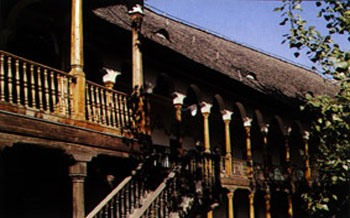 Bucharest's museums are a destination in themselves, especially the open-air Muzeul Satului (Village Museum) in the Herastrau Park near the Arcul de Triumf. Here you will find village architecture and crafts from all over Romania, including wooden churches from Maramures.
Bucharest's museums are a destination in themselves, especially the open-air Muzeul Satului (Village Museum) in the Herastrau Park near the Arcul de Triumf. Here you will find village architecture and crafts from all over Romania, including wooden churches from Maramures.
Other "musts" include the National Museum of Art, once the Royal Palace; the National History Museum on Calea Victoriei, housing the superb silverware of the Treasury; and Curtea Veche with its decorated little 16th century church.
Nearby stands the magnificent Church of the Patriarchate, built in 1657 and preserved amongst the contrasting modernity of the Centrul Civic. And don't miss Stavropoleos Church near Curtea Veche, a real jewel of Romanian Orthodox architecture. If you are lucky to be in one of these churches during a christening or wedding ceremony you will witness an unforgettable ritual.
La Boheme in Bucharest
The city's artistic life stood up to its Parisian nickname and today is as vibrant as ever. A classic repertoire - Puccini, Verdi, Rossini, Mozart - is maintained at the Opera House.
The splendid neo-classical building of the Atheneul Roman (Romanian Athenaeum) lends grace to international-standard concerts by the George Enescu Philharmonic Orchestra. Yet the cost of tickets is only a fraction of the price you would pay elsewhere.
Downtown Delights
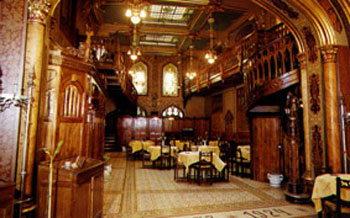
All tourists like shopping and you will find department stores around Piata Unirii and on the main boulevards. Alternatively you can take a walk in a bazaar district of small traders on the narrow streets around Strada Lipscani, close to Curtea Veche.
Specialities to look for include local pottery, glassware, linen and woodcarvings. As an alternative, you may go to the thronging Talcioc Sunday morning flea market along the Dambovita river for a memorable experience.
The capital's restaurants are regaining their vigour; grilled beef, chicken or pork are the basis of many dishes, followed by a variety of pastries for dessert. Enliven your meals with Romanian wines and with plum brandy (Tuica), the national drink, as an appetizer.
Prices are reasonable and the atmosphere in bars, restaurants and night clubs is welcoming, often refined by the rhythms of gypsy music. Romanians are warm-hearted people who like to enjoy themselves. Why not join them and have fun.
The Outskirts of the City
Bucharest is surrounded by forests and lakes; ancient Palaces and Monasteries are set amongst them. The towered Snagov Monastery, dating from 1408, is popular among the inhabitants who go canoeing on the lake.
Why not visit the elegant 18th century Mogosoaia palace, only 14 km (9 miles) north of Lake Mogosoaia. There are many other possibilities.

